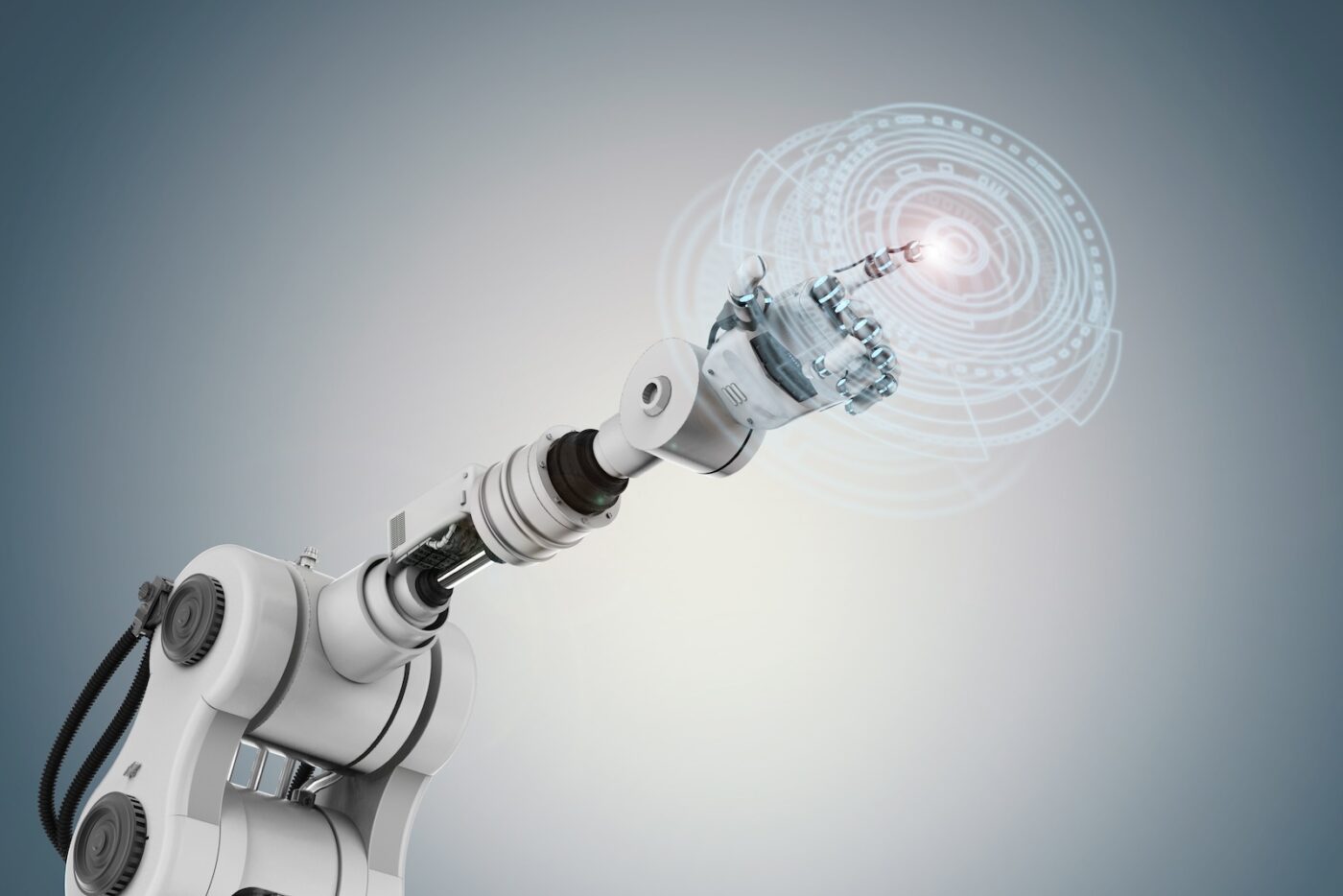Transforming the Future of AI and Robotics with Multimodal LLMs

Ever heard of Moravec’s paradox? The concept proposes that for artificial intelligence (AI) systems, high-level reasoning demands minimal computation, while basic sensorimotor skills necessitate substantial computational resources. In simpler terms, AI finds it easier to manage complex, logical tasks than basic, sensory tasks that humans perform instinctively. This paradox underscores the disparity between AI capabilities and human cognition.
Humans are inherently multimodal. Each one of us is akin to an intelligent endpoint. We receive training through education, but ultimately, we operate autonomously, without needing instructions for every action from a central authority.
We achieve this autonomy through perception via various sensory modes, such as vision, language and sounds, touch, taste, and smell. These inputs allow us to analyze, reason, make decisions, and take action.
How are multimodal sensors enhancing the capabilities of robots?
With the progression of sensor fusion and AI, robots are now being equipped with multimodal sensors. As we continue to bring more computational power to edge devices, including robots, these devices are becoming increasingly intelligent. They can perceive their surrounding environment, communicate in natural language, and even get a sense of touch within digital interfaces.
Moreover, robots can sense specific forces, angular rates, and sometimes even the magnetic field around them. This is achieved using a combination of accelerometers, gyroscopes, and occasionally, magnetometers.
Before the advent of transformer models and Large Language Models (LLMs), multimodality in AI often involved separate models for different types of data (text, image, audio) with complex integration processes. However, with the introduction of these models, multimodality has become more integrated, allowing a single model to process and understand multiple data types simultaneously. This shift has significantly improved the efficiency and effectiveness of multimodal AI applications.
Examples of multimodal LLMs shaping the future of AI and robotics
While LLMs like GPT-3 are primarily text-based, there have been rapid advancements toward multimodality. Models such as OpenAI’s CLIP and DALL·E, and now Sora and GPT-4o, are examples of steps toward multimodality and much more natural human-computer interactions. These models bridge visual and textual information, generate images from textual descriptions, and even generate videos from text descriptions.
The pace of development is accelerating in 2024. In February, OpenAI announced Sora, which can generate realistic or imaginative videos from text descriptions. This could offer a promising path towards building general-purpose world simulators, which can be an essential tool for training robots.
Three months later, GPT-4o significantly improved the performance of human-computer interaction and can reason across audio, vision, and text in real time. The significant performance lift was achieved by training a single new model end-to-end across text, vision, and audio.
In the same week in February 2024, Google announced Gemini 1.5, which significantly enhanced the context length to 1 million tokens. This means Gemini 1.5 Pro can process vast amounts of information in one go — including 1 hour of video, 11 hours of audio, codebases with more than 30,000 lines of code or more than 700,000 words.
Fast forward to May at Google IO, Google discussed a future vision in Project Astra, a universal AI assistant that can process multimodal information, understand the context you’re in, and respond naturally in conversation. Meta, the company behind Llama open-source LLM, also entered the artificial general intelligence (AGI) race.
This true multimodality has significantly heightened the level of machine intelligence, which will bring new paradigms to many industries. For example, robots once had a single purpose: They had some sensors and movement capabilities, but in general, they just did not have a “brain” to learn new things and respond to unstructured and unseen environments.
What role do multimodal LLMs play in the evolution of robots?
This true multimodality has significantly heightened the level of machine intelligence, which will bring new paradigms to many industries. For example, robots were once a single purpose. They had some sensors and movement capabilities, but in general, they just did not have a “brain” to learn new things and respond to unstructured and unseen environments.
Multimodal LLMs promise to transform robots’ abilities to analyze, reason, and learn – to evolve from a single purpose to a general purpose. Other general-purpose compute platforms such as PCs, servers, and smartphones, have been remarkable in that they can run so many different kinds of software applications. General purpose will bring scale, economy of scale, and much lower prices, which can lead to the virtuous cycle of more adoption.
Elon Musk saw this early and has evolved the Tesla robot from Bumble Bee in 2022 to Optimus Gen 1 in March 2023, and Gen 2 in late 2023. In the last 6-12 months, we have witnessed a slew of robotics and humanoids breakthroughs.
While we’ve made significant strides in AI and robotics, there’s still work ahead. We need lighter designs, longer operating times, and more capable edge computing platforms to process and fuse sensor data information, make decisions, and control actions.
We’re on a path to create humanoids – systems that require human-like interactions or operations in environments designed for humans. These systems are ideal for handling human “3-D” work – dirty, dangerous, and dull tasks. This includes patient care and rehabilitation, service roles in hospitality, education as teaching aids or learning companions, and dangerous tasks like disaster response and hazardous material handling.
There’s exciting new research and collaboration among AI and robotics organizations around training robots to reason and plan better in unstructured and new environments. With the excellent generalization capabilities of models pre-trained on large amounts of data, robots can understand the environment better, adjust their movements and actions in response to sensory feedback, and optimize performance across varied and dynamic environments.
A fun example is Spot, the Boston Dynamics robot dog acting as a tour guide in museums. Spot can interact with visitors, introduce various exhibits to them, and answer their questions. In this use case, Spot being entertaining, interactive, and nuanced outweighed the need to be always factually correct.
What are robotics transformers?
Robotics transformers, which translate multimodal inputs into actions, are rapidly evolving. Google DeepMind’s RT-2 performs equally well as RT-1 for seen tasks, with a nearly 100% success rate. However, RT-2 excels in generalization and outperforms RT-1 in unseen tasks when trained on PaLM-E, an embodied multimodal language model for robotics, and PaLI-X, a large-scale multilingual vision and language model not specifically designed for robotics.
Microsoft introduced LLaVA (Large Language and Vision Assistant). It leverages the power of GPT-4, initially designed for text-based tasks, to create a new paradigm of multimodal instruction-following data that seamlessly integrates textual and visual components, which could be very useful for robotics tasks.
Tesla’s move into the humanoid and robotics field was significant, not only because it aims to design for scale and production, but also because Tesla Autopilot’s strong Full Self-Driving (FSD) technology foundation can be leveraged for robotics. Tesla also can apply Optimus to its EV manufacturing processes.
Tomorrow’s robotics, built on Arm
In robotics, tasks can range from basic computations, like sending and receiving signals to motors, to advanced data processing, such as interpreting image and sensor data. These tasks also include running multimodal Large Language Models (LLMs). This is where Central Processing Units (CPUs) are excellent for general-purpose tasks, while AI accelerators and Graphics Processing Units (GPUs) efficiently handle parallel processing tasks like machine learning and graphics processing.

To enhance a robot’s vision capabilities and improve storage and transmission efficiencies, additional accelerators like image signal processors and video codecs can be integrated. CPUs also need to have real-time capabilities for responsiveness and the ability to run rich operating systems like Linux and the Robot Operating System (ROS) package.
When we look at the robotics software stack, the Operating System (OS) layer potentially needs a Real-Time Operating System (RTOS) capable of handling time-critical tasks with high reliability. It also needs Linux distributions customized for robotics, like ROS, which provides services designed for a heterogeneous computer cluster.
Arm-initiated standards and certification programs, such as SystemReady and PSA Certified, will help scale robotics software developments. SystemReady is designed to ensure that standard-rich OS distributions can run on any Arm-based System on a Chip (SoC), and PSA Certified helps ease security implementation to meet regional security and regulatory compliance requirements for connected devices.
The advancements of large multimodal models and General AI (GenAI) herald a new era in AI robotics and humanoid development. In this new era, energy efficiency, security, functional safety, AI computing, and ecosystem are essential to evolving robotics into the mainstream. Arm processors have been widely used in robotics, and we look forward to working closely with the ecosystem to build the future of AI robotics, on Arm.
Any re-use permitted for informational and non-commercial or personal use only.













